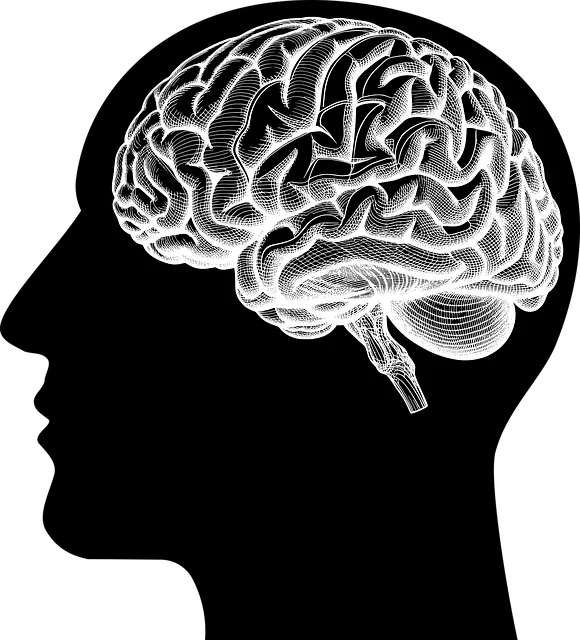The Kaiser Permanente mental health facility in Arvada prioritizes improving patient care and provider resilience through understanding Reach, Frequency, and Motivation (RFM). By assessing support access, coping engagement, and growth motivation, they design targeted programs like Burnout Prevention, Emotional Intelligence development, and Mental Wellness Coaching. These innovative interventions focus on building resilience, empowering patients with mood management skills, and offering evidence-based strategies tailored to diverse needs. Kaiser Permanente Arvada's holistic approach enhances mental well-being and equips individuals with practical tools for life's challenges.
“Resilience is a powerful tool in mental health care, and the RFM (Recovery, Flexibility, and Mastery) model offers a structured approach to building it. This article explores how Kaiser Permanente Arvada, a leading mental health facility, has successfully integrated resilience-building programs into their patient care. We’ll delve into the significance of RFM, its impact on patient outcomes, and practical strategies for designing effective exercises. Additionally, we’ll uncover challenges and real-world success stories from this innovative program, highlighting Kaiser Permanente Arvada as a model for enhancing mental health support.”
- Understanding RFM and its Significance in Mental Health Care
- Kaiser Permanente Arvada: A Model for Integrating Resilience-Building Programs
- Identifying the Target Population: Patients at Kaiser Permanente
- Designing Effective Resilience Exercises: Practical Strategies
- Implementation Challenges and Success Stories from Real-World Settings
Understanding RFM and its Significance in Mental Health Care

At the Kaiser Permanente mental health facility in Arvada, understanding RFM (Reach, Frequency, and Motivation) is crucial to enhancing patient care and fostering resilience within the healthcare provider community. This framework plays a pivotal role in tailoring interventions and programs aimed at improving mental wellness. By assessing an individual’s reach (access to support), frequency (engagement with coping mechanisms), and motivation (desire for growth), healthcare professionals can design targeted strategies. Such initiatives may include Burnout Prevention Strategies for Healthcare Providers, incorporating Emotional Intelligence development, and implementing Mental Wellness Coaching Programs.
These tailored interventions are essential in addressing the unique challenges faced by both patients and providers at a bustling mental health facility like Kaiser Permanente Arvada. By recognizing and leveraging RFM dynamics, the facility can create a more supportive environment, promote resilience, and ultimately enhance overall mental health outcomes for all involved.
Kaiser Permanente Arvada: A Model for Integrating Resilience-Building Programs

Kaiser Permanente Arvada stands as a beacon of innovation within the mental health landscape, showcasing how integrating resilience-building programs can transform patient care. As a leading mental health facility, they’ve recognized the profound impact of cultivating inner strength and mood management skills among their clientele. By seamlessly incorporating exercises that promote emotional resilience, conflict resolution techniques, and other evidence-based strategies, Kaiser Permanente Arvada has created a holistic approach to healing.
This model demonstrates that going beyond traditional therapy sessions can lead to lasting benefits. Through dedicated programs designed to strengthen individuals’ ability to navigate life’s challenges, the facility empowers patients to develop inner strength and resilience. As a result, not only does it enhance their mental well-being, but it also equips them with practical tools for managing stress, resolving conflicts, and maintaining emotional stability in their daily lives.
Identifying the Target Population: Patients at Kaiser Permanente

At Kaiser Permanente mental health facility in Arvada, identifying the target population is a strategic step in implementing RFM (Resilience, Flexibility, and Mastery) and resilience-building exercises. The focus here is on patients who could greatly benefit from enhanced coping mechanisms and stress management techniques to improve their overall well-being. This includes individuals dealing with anxiety, depression, or other mental health challenges that may hinder their daily functioning and resilience.
By targeting Kaiser Permanente’s patient population, the goal is to equip them with valuable tools such as Mindfulness Meditation, Social Skills Training, and Stress Reduction Methods. These exercises are designed to foster adaptability, emotional regulation, and a sense of control, ultimately helping patients navigate life’s challenges more effectively.
Designing Effective Resilience Exercises: Practical Strategies

Resilience exercises tailored for a Kaiser Permanente mental health facility in Arvada should be meticulously designed to address the unique needs of its population. Incorporating evidence-based practices and engaging activities can create an effective framework for enhancing mental wellness and promoting mood management. For instance, incorporating mindfulness techniques, cognitive reframing, and stress reduction strategies into the exercises can equip individuals with valuable tools to navigate challenges. These strategies not only foster resilience but also serve as proactive measures against depression prevention, which is a significant concern within mental health facilities.
Practical considerations include tailoring activities for diverse groups and abilities, ensuring cultural sensitivity, and integrating technology where applicable. For example, group exercises focused on building social connections and shared experiences can create a supportive environment. Additionally, incorporating digital tools for mood monitoring and mindfulness practices can enhance accessibility and engagement, catering to the modern needs of the Arvada community.
Implementation Challenges and Success Stories from Real-World Settings

Implementing resilience-building exercises (RFM) in mental health facilities presents unique challenges, particularly when integrating them into established programs at large organizations like Kaiser Permanente’s Arvada mental health facility. One significant hurdle is aligning RFM with existing service models and ensuring its seamless integration without disrupting day-to-day operations. Mental health professionals must also balance the need for structured programming with the flexibility required to adapt exercises to individual patient needs and cultural contexts.
Despite these challenges, successful real-world implementations have emerged, offering valuable insights into effective RFM strategies. For instance, Kaiser Permanente Arvada has pioneered Trauma Support Services, incorporating RFM techniques like mindfulness practices and group discussions to enhance patients’ coping mechanisms. Similarly, Risk Management Planning for Mental Health Professionals has proven crucial in preparing practitioners to handle complex cases, thereby improving patient outcomes. These success stories highlight the transformative power of tailored RFM programs in fostering mental health awareness and resilience among both service users and providers.
Resilience is a powerful tool in mental health care, and the implementation of RFM exercises, as seen at Kaiser Permanente Arvada, offers a promising approach. By focusing on specific strategies and tailoring them to patient needs, mental health facilities can significantly enhance their services. This article has explored the importance of RFM, provided practical insights for designing resilience programs, and highlighted successful real-world applications, particularly within the context of a leading mental health facility, Kaiser Permanente Arvada. Embracing these practices may revolutionize how we support individuals in building mental fortitude.






